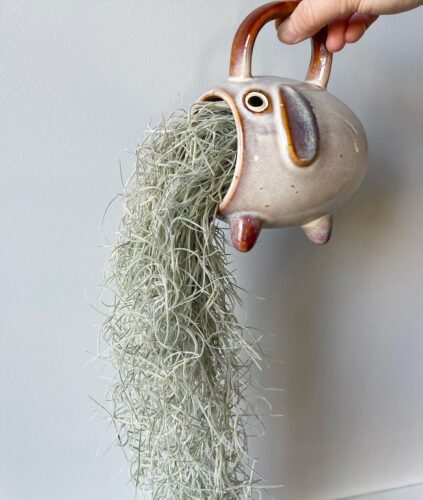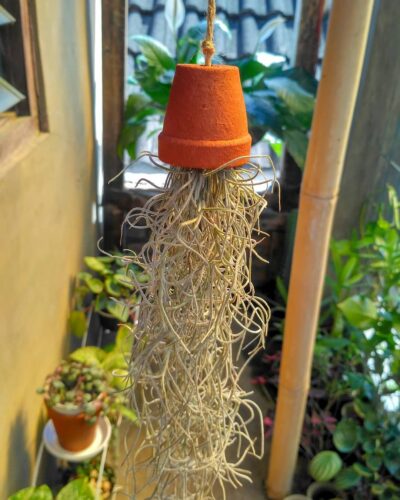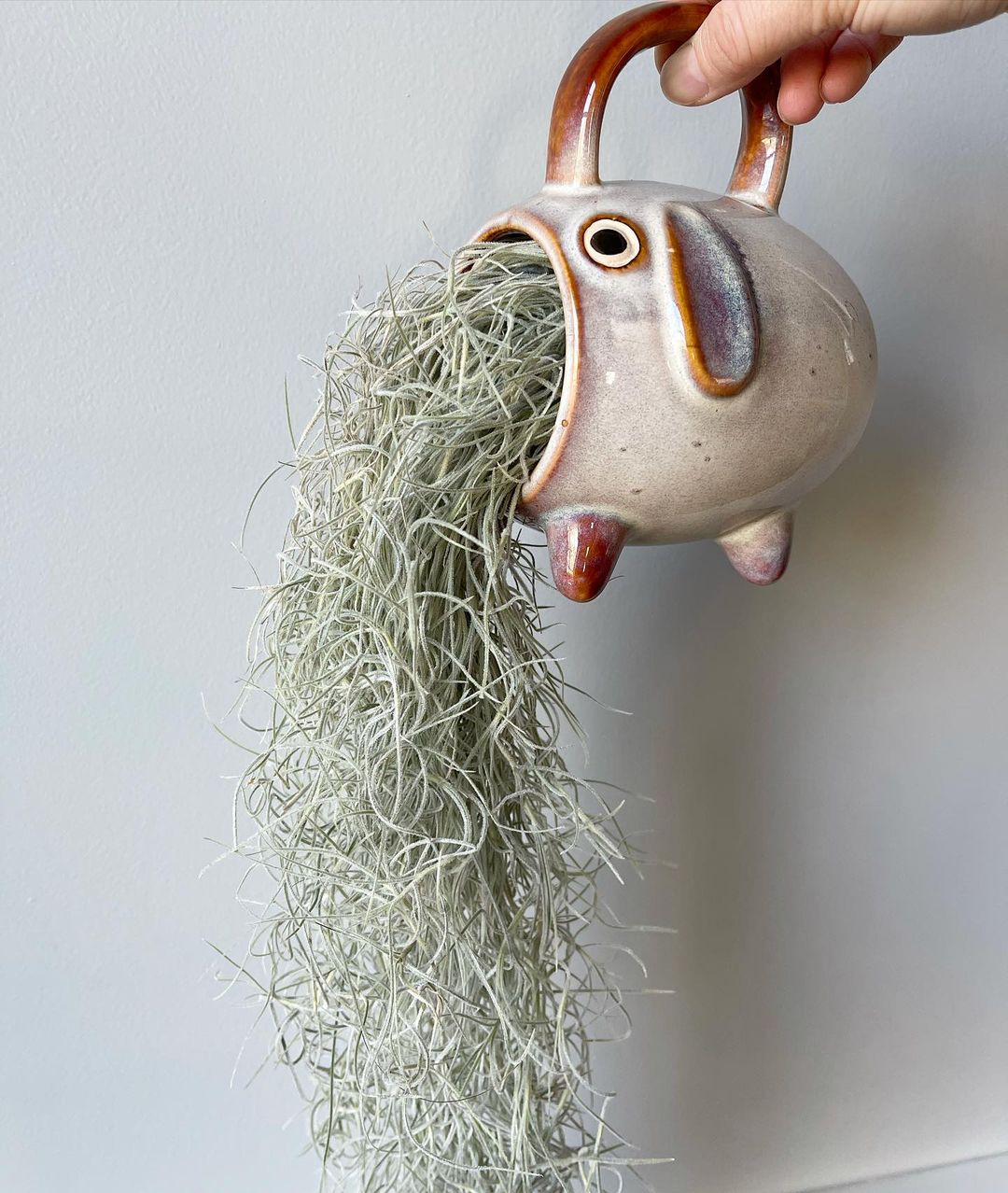Follow the best Tips to Grow Spanish Moss and include this epiphyte indoors and outdoors. It is ideal for new gardeners as well.
Explore the easy Tips to Grow Spanish Moss in your home with this expert guide that help you in growing this epiphyte in your garden.
Common Names: Spanish Moss, Old Man’s Beard, Kali’s Hair, Spanish Beard. Tree Hair
Botanical Name: Tillandsia usneoides
Read: Tillandsia Magnusiana Care and Display Ideas
Spanish Moss Profile

Native to the southeastern U. S and Central America, Spanish moss displays tubular, small, pale green blooms hidden under long hanging strands of the plant. It flowers from late spring to early summer and displays small, mildly scented blooms that attract pollinators. The fruit of Spanish moss are spherical, small green capsules like a tiny pinecone.
Read: Colocasia Esculenta ‘Black Coral’ Care and Growing Guide
How does Spanish Moss Grow?
- Spanish moss connects itself to branches or trees using ‘holdfast’ structures, which help the plant secure itself without depending on the host for nutrients.
- This plant absorbs nutrients from the rain and air through trichomes.
- The thread-like strands of the plant grow quite long when new growth appears, old strands turn brittle or brown.
Read: Black Pothos: Scindapsus treubii ‘Dark Form’ Growing Guide
How to Grow Spanish Moss

Spanish moss can be grown by division, air-layering, seeds, offsets, and cuttings. The most preferable propagation method is air-layerings; check the easy steps below.
Things You’ll Need:
- Small pieces of Spanish moss up to (6-12 inches long)
- Plastic bag or wrap
- Thin wire or twist ties for securing the moss
Directions:
- Select a mature, healthy plant with long strands. Choose a support structure on a plant, wall, or tree where you decided to grow Spanish moss.
- Lay the 6-12 inches long Spanish moss strand on your selected branch or support.
- Cover the moss and support or branch with a plastic bag to create a seal near the Spanish moss.
- Use thin wire or twist ties to secure the plastic wrap in place.
- Make sure the moss is kept properly against the support.
- Keep an eye on the moss for a few weeks; the sealed conditions promote the growth of roots from the connected moss.
- Mist it from time to time.
- Within approximately 4-8 weeks, check through the plastic bag for root development. If you find roots are grown, then it is a sign that moss can be separated from the parent plant.
Read: How to Grow Sleeping Pothos
Best Container for Spanish Moss
For growing Spanish moss in a container, choose a hanging basket with a diameter of 6-8 inches. You can grow Spanish moss in shallow containers as they do not have an extensive root system. Wireframes, hanging baskets, or open pots give good air circulation and imitate the natural habitat of Spanish moss.
Read: String of Stars Plant Care and Growing Guide
Ideal Growing Conditions for Spanish Moss

Sunlight
This epiphyte enjoys filtered, indirect light as direct sun can scrotch the strands. While growing indoors, keep Spanish moss near the east or west-facing window. A window with bright indirect sun will be the ideal place to hang this moss.
NOTE: Direct sun can burn the leaves, so avoid it at any cost.
Soil
Spanish moss grows without soil; attach it to a piece of wood or other structures.
Display
Spanish moss needs no soil to grow; just wrap it around a potted plant or a ceiling hook. You can even make a living curtain out of it; make sure it receives enough light. It makes a great companion with bromeliads and orchids.
Water
If the growing conditions are sufficiently humid, watering the Spanish moss is not needed. If there is central heating during winter, submerge the plant in rainwater for a few minutes and hang it to dry out. Try this soaking process less compared to misting and allow the leaves to dry out between soaking the plant.
TIP: You can grow Spanish moss in the bathroom as well, but ensure the place gets enough indirect light.
Read: Growing Pussy Willow in Water
Spanish Moss Care
Fertilizer
If your growing environment is not humid enough and leaves are turning brown, then mist the plant from time to time with a dilute mix of balanced liquid fertilizer.
Pests and Diseases
Spanish moss is safe from pests and diseases. However, the browning of the leaves signifies the absence of moisture, in such conditions, mist or water the plant.



